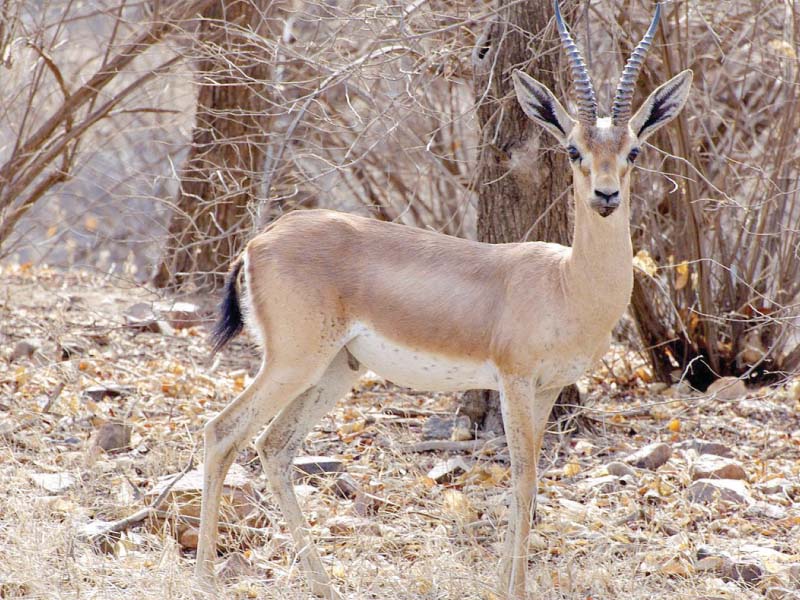
In the past, Chinkara deer had been wiped out from Cholistan area due to poaching. Similarly, the population of other wildlife species had also mitigated due to illegal hunting and climatic change. However, the population of different wildlife species has once again blossomed due to the sincere efforts of the department, he said.
Talking to APP, the official stated that the Punjab government launched the Desert Protection Project in 2006-7, with an aim to save wildlife and their natural habitats. Around 100 officials, including guides, watchers, guards, and survey teams were deputed in the desert along with nearly 20 jeeps. He added that the Chinkara deer were almost wiped out in Cholistan during 2006-7. However, the population of Chinkara deer has increased remarkably due to the performance of the desert protection teams. Now, about 4,000 deer can found in the desert.
Similarly, the Great Indian bustard, another rare species, has also been spotted in the desert. Survey teams spotted nine to eleven Great Indian bustards, an animal which resembles an ostrich. It has long legs and can weigh up to five to six kilogrammes.
Black bucks, jackals, foxes, wolves, honey badgers (Bijju) have also been spotted in the area. Thousands of teeter birds are also present in the desert, he stated.
Regarding the performance of desert protection teams, Abbas said that the condition of jeeps was not ideal as officials have been using these vehicles since 2006-7. Similarly, teams also faced a shortage of funds while safeguarding wildlife species in Cholistan.
A total of 24 check posts had been established by the Wildlife Department to discourage illegal hunting in the desert, he said. He added that many poachers had been fined.
Recent rains will benefit wildlife in the drought-hit desert areas where water ponds have shrunk immensely. Bahawalpur Wildlife Deputy Director Mian Abbas said that the desert area stretches over 6,600,000 acres from Fort Abbas to Sadiqabad. The drought in desert areas had affected wildlife breeding, he added. Wildlife species had to suffer due to the unavailability of water, he said, adding that there are hundreds of minor ponds located in the area. Due to a lack of rainfall in the past, the ponds dried up which affected the wildlife, he stated. The recent rainy spells in February will help to improve the numbers of wildlife in the near future. It will offer a conducive breeding environment for different species. Several species are found in the area include jackals, foxes, wolves, great Indian bustards, grey francolin, and many others.

1732437695-0/drake-and-charles-(1)1732437695-0-165x106.webp)


1732434981-0/BeFunky-collage-(10)1732434981-0-165x106.webp)












COMMENTS
Comments are moderated and generally will be posted if they are on-topic and not abusive.
For more information, please see our Comments FAQ